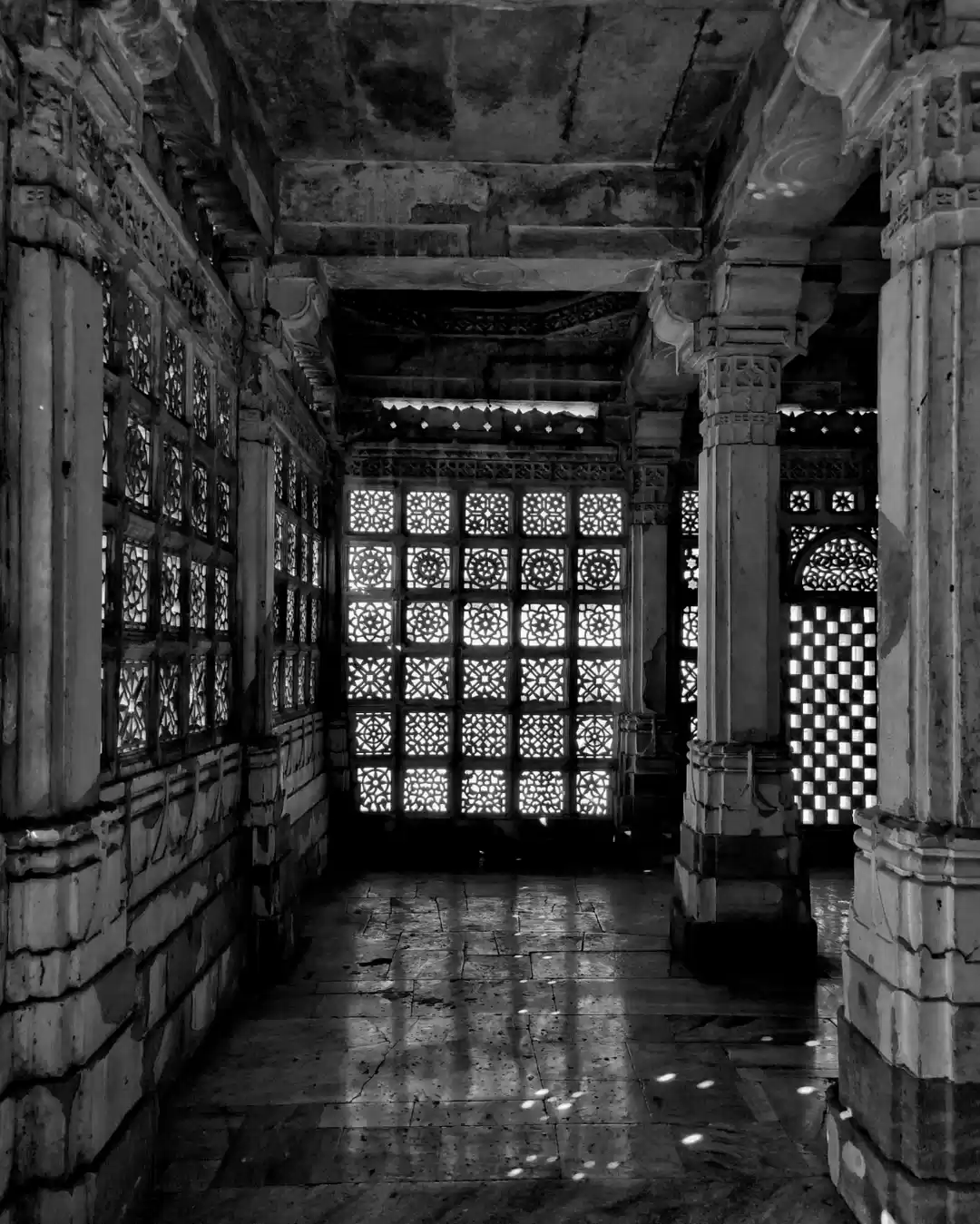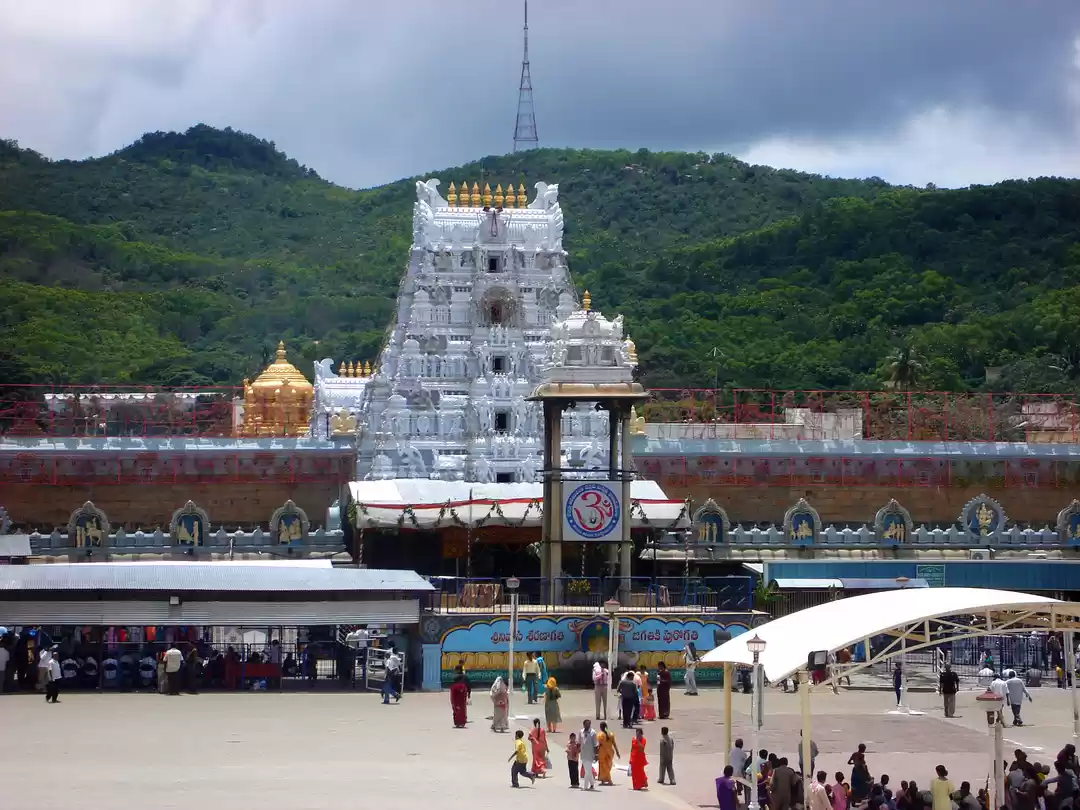Ambaji Temple is one of the most revered and visited temples in India. Located in the town of Ambaji in Banaskantha district of Gujarat, this temple is dedicated to Goddess Amba or Ambika, who is considered as one of the forms of Goddess Sati or Shakti. The temple is also one of the 51 Shakti Peeths, where the severed body parts of Goddess Sati fell after her self-immolation. According to the legend, the heart of Goddess Sati fell at this place, and hence it is known as the Hridaya Peeth or the Heart Peeth.
The temple attracts millions of devotees and tourists every year, who come to seek the blessings of the Goddess and witness the beauty and glory of the shrine. The temple is also famous for its unique feature that it has no idol of the Goddess but a sacred Shri Yantra that is worshipped with blindfolded eyes. The Shri Yantra is a geometric diagram that represents the cosmic energy and power of the Goddess. It is believed that the Shri Yantra was installed by Adi Shankaracharya, the great Hindu philosopher and reformer.
The Shrine of Ambaji
The main attraction of the temple is the shrine of Ambaji, which is situated in a spacious hall with a gold-plated dome. The shrine has no idol of the Goddess but a sacred Shri Yantra that is worshipped with blindfolded eyes. The Shri Yantra is a complex geometric diagram that consists of nine interlocking triangles that form 43 smaller triangles. The triangles represent the cosmic energy and power of the Goddess, who is also known as Lalita Tripura Sundari or the most beautiful one in three worlds.

The Shri Yantra is covered with a red cloth and placed on a silver platform. The devotees are not allowed to see the Shri Yantra directly, but have to look at it through a small hole in a brass plate that is placed in front of it. The devotees have to cover their eyes with a cloth and then peek through the hole to catch a glimpse of the Shri Yantra. This is done to symbolize the devotion and surrender to the Goddess, who can only be seen by those who have pure hearts and minds.
The shrine also has a silver throne where a golden crown and other ornaments are kept for the Goddess. The crown is said to have been gifted by Maharaja Ranjit Singh, the ruler of Punjab, who was a devotee of Ambaji. The shrine also has a silver lamp that burns continuously and emits a fragrant smoke. The lamp is said to have been lit by Lord Krishna himself when he visited Ambaji.
The Worship and Festivals of Ambaji
The temple is open for darshan from 7 am to 11:30 am and from 12:30 pm to 4:30 pm. The temple also performs daily aarti at 6:30 am, 12 noon, and 7 pm. The temple timings may vary on special occasions and festivals.
The temple celebrates many festivals throughout the year, such as Diwali, Holi, Janmashtami, and Shivaratri. However, the most important and grand festival is Navratri, which is celebrated for nine nights in honor of the Goddess.

Navratri means nine nights, and each night represents a different aspect or form of the Goddess. The devotees worship the Goddess with different offerings and prayers each night and seek her blessings for various aspects of life. The temple is decorated with lights and flowers, and thousands of devotees perform garba and dandiya dances around the temple premises. Garba and dandiya are traditional folk dances of Gujarat that involve rhythmic movements with sticks or claps. The dances are performed as a way of expressing joy and devotion to the Goddess.
The ninth night or Vijaya Dashami is considered as the most auspicious day of Navratri, as it marks the victory of good over evil. On this day, the devotees offer coconut, flowers, sweets, and clothes to the Goddess and receive her prasad or blessings. The prasad consists of roasted gram flour balls mixed with sugar or jaggery, which are called sukhadi or gur papdi. The prasad symbolizes happiness and prosperity for the devotees.
The Attractions near Ambaji
The temple is not only a spiritual destination but also a cultural and natural one. There are many other attractions near the temple that are worth visiting, such as:

Gabbar Hill:
This is a hill located about 5 km from the temple, where it is believed that Goddess Sati’s footprints are imprinted on a rock. The hill also offers a panoramic view of the town and the temple. There is a ropeway service that connects the temple and the hill for the convenience of the visitors. The hill also hosts a full moon fair every month, where devotees gather to worship the Goddess under the moonlight.

Kumbhariya Jain Temples:
These are a group of five ancient Jain temples that are located about 10 km from the temple. The temples are dedicated to different Tirthankaras or Jain saints and are known for their exquisite carvings and sculptures. The temples date back to the 11th or 12th century and are considered as architectural marvels.
Balaram Mahadev Temple:
This is another ancient temple that is located about 14 km from the temple. The temple is dedicated to Lord Shiva and is situated on the banks of a river. The temple is surrounded by lush green forests and hills and has a natural spring that flows from a cave. The temple also has a wildlife sanctuary nearby that houses various animals and birds.

Kamakshi Mandir:
This is a small temple that is located about 1 km from the temple. The temple is dedicated to Goddess Kamakshi, who is another form of Goddess Sati or Shakti. The temple has a beautiful idol of the Goddess made of marble and adorned with jewels.
Also check out: Weekend Getaways From Ahmedabad!
How To Reach
There are different ways to reach Ambaji Temple, depending on your mode of transportation and your starting point. Here are some of the options:
By Air:
The nearest airport to Ambaji Temple is Sardar Vallabhbhai Patel International Airport in Ahmedabad, which is about 179 km away1 or 186 km away2. You can take a flight to Ahmedabad from many major cities in India and abroad. From the airport, you can hire a taxi or a bus to reach Ambaji Temple.
By Train:
The nearest railway station to Ambaji Temple is Abu Road, which is about 20 km away123. Abu Road is well connected to many important cities in India, such as Delhi, Mumbai, Chennai, Hyderabad, Jaipur, Pune, etc. You can take a train to Abu Road from any of these cities. From the station, you can take a taxi or an auto-rickshaw to reach Ambaji Temple.
By Road:
Ambaji Temple is well connected by road to many nearby towns and cities in Gujarat and Rajasthan. You can drive to Ambaji Temple from places like Palanpur (65 km), Mount Abu (45 km), Udaipur (172 km), Ahmedabad (175 km), etc. You can also take a bus service from any of these places to Ambaji Temple. The roads are in good condition and offer scenic views of the hills and forests along the way.
You may also like to read: Gujarat : Dwarka - Somnath Temple - Porbandar
Ambaji Temple is a divine destination for devotees and tourists who want to experience the grace and glory of the Goddess. The temple offers a serene and sacred atmosphere that fills the visitors with peace and joy.
The temple also showcases the rich culture and heritage of Gujarat and India. If you are looking for a spiritual and cultural getaway, then Ambaji Temple should be on your bucket list.



















